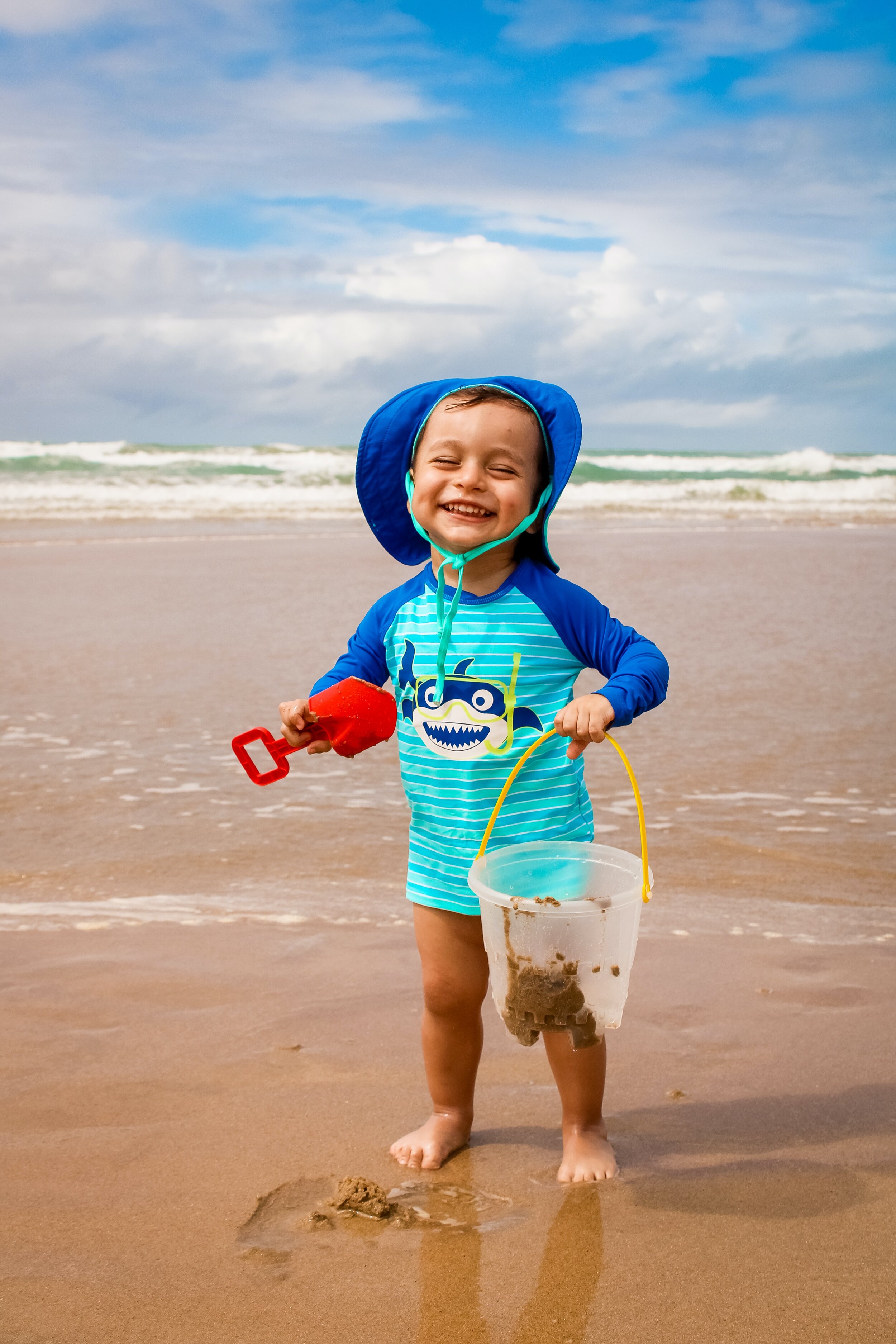
Sun Safety Tips
Queensland has the most glorious summer and we are blessed to have the warmer for much of the year. There are however some important sun safety rules thats should apply! During the longer days, the sun stays out into the evening and you need to consider this, Yup, it's summer. And before the kids race out the door, you're doing all you can to protect them from sun, bugs, head injuries, etc.
There's something about this warmer weather that makes kids run faster and play harder. And like everything else parents carefully do to protect their kids — cooking healthy kid food, hiring the right babysitters, buckling them into car seats (or shouting out seat belt reminders) — summer takes preparation, too.
Here's how you can keep your kids safe this season (without feeling like the fun police).
Be sun savvy
Here's a summer-bummer: A person's sunlight exposure during childhood and adolescence is generally considered to increase the risk of melanoma. We've heard it all before, but make sure your whole family has the same sun strategy.
Apply early and repeat. For kids 6 months and older (as well as adults), sunscreen with a Sun Protection Factor (SPF)50+ reduces the intensity of UVRs that cause sunburns. Apply liberally 15 to 30 minutes before sun exposure so it has time to absorb into the skin and decreases the likelihood of it will be washed off. Reapply every two hours and after kids swim, sweat or dry off with a towel. Proper application and reapplication are vital factors to sun protection.
Cover. Dress kids in protective clothing and hats. Clothing can be an excellent barrier of UV rays. Many lightweight, sun-protective styles cover the neck, elbows and knees.
Keep infants out of the sun. Keep babies younger than 6 months out of direct sunlight, dressed in cool, comfortable clothing and wearing hats with brims. Sunscreen may be used on infants younger than 6 months on small areas of skin, like the infant's face and the back of the hands, if adequate clothing and shade are not available, but remember it takes 30 minutes to be effective.
Plan early morning play. For kids beyond that baby stage, plan outdoor activities to avoid peak sun hours (10 a.m. to 4 p.m.) as much as possible. We know this sounds impossible, but avoid high sun areas such as the park, open swimming pools and playgrounds as much as possible during these times, and take a break from the sun when needed.
Beware of shade. Many people think sitting in the shade is a simple sun compromise. Shade does provide relief from the heat, but it offers parents a false sense of security about UVR protection. You can still get a sunburn in the shade because light is scattered and reflected. A fair-skinned person sitting under a tree can burn in less than an hour.
Check the weather. When planning outdoor activities, look for the UV Index on a reputable weather site. It predicts the intensity of UV light based on the sun's position, cloud movements, altitude, ozone data and other factors. Higher UV index numbers predict more intense UV light.
